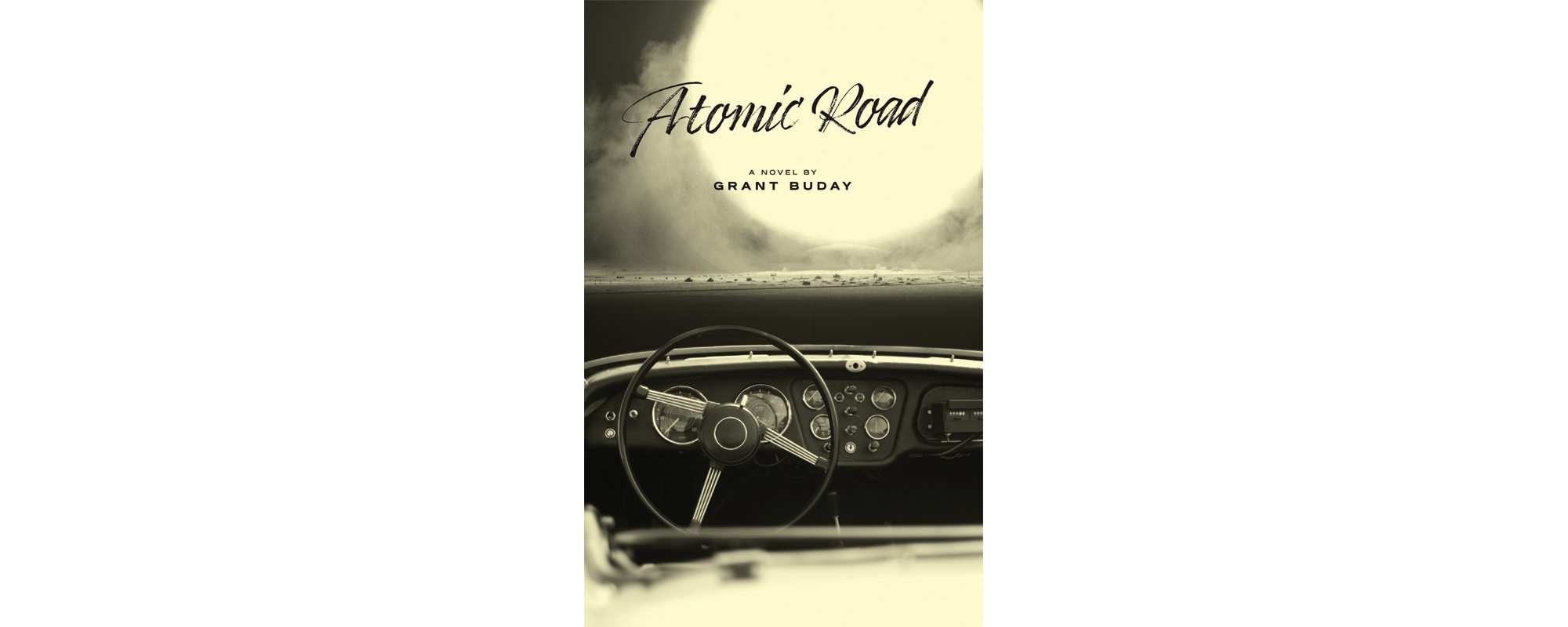 The foreword, by art historian John O’Brian, informs us that Atomic Road was prompted by a historical footnote that mistakenly placed Louis Althusser in Saskatchewan. The French Marxist philosopher, who died in 1990, had never even visited Canada, but O’Brian’s imagination was stoked by this alternate history, in which Althusser travelled to the prairie province – perhaps in the 1960s, perhaps drawn by the promise of observing North America’s sole socialist government, perhaps lured by the radical new treatments for mental illness being conducted there, among them the administration of LSD. (Althusser was a profoundly traumatized Holocaust survivor.)
The foreword, by art historian John O’Brian, informs us that Atomic Road was prompted by a historical footnote that mistakenly placed Louis Althusser in Saskatchewan. The French Marxist philosopher, who died in 1990, had never even visited Canada, but O’Brian’s imagination was stoked by this alternate history, in which Althusser travelled to the prairie province – perhaps in the 1960s, perhaps drawn by the promise of observing North America’s sole socialist government, perhaps lured by the radical new treatments for mental illness being conducted there, among them the administration of LSD. (Althusser was a profoundly traumatized Holocaust survivor.)
O’Brian passed this nugget on to B.C. author Grant Buday, who fashioned it into this darkly comic road-trip bromance, set during the Cuban Missile Crisis. In Buday’s telling, U.S. art critic Clement Greenberg treks from New York to the Canadian prairie with Althusser and a third, entirely fictional character named Jean Claude Piche, a veteran of conflicts in Indochina and Algeria. It is suspected Piche has been hired to kill Althusser. I offer this backstory partly because Atomic Road begins with it, partly to explain how Buday came to develop such an amusingly unusual narrative, and partly to make sense of the ways Buday grapples with certain fraught questions concerning his characters’ moral infractions.
The shadow of potential apocalypse looms over several smaller, individual apocalypses in Atomic Road. Each of our travellers either wants to gravely harm or has gravely harmed someone. Piche, as noted, seems set to ice Althusser. Greenberg, whose destination is an artists’ colony in Emma Lake, is hoping to convince Althusser to murder his rival, real-life art critic Harold Rosenberg, who will also be in attendance and who threatens to dismantle Greenberg’s legacy as the century’s pre-eminent commentator on abstract expressionism. Althusser is seeking therapy at a hospital in Weyburn, Saskatchewan, in the wake of strangling his wife to death, a crime for which he was acquitted due to mental illness. The historical Althusser did kill his wife but not until 1980; Buday’s decision to alter this fact for the sake of narrative convenience gets more ethically knotty the further we progress along this murderous trio’s zany, rangy route.
Writing in the third person while holding close to Greenberg’s interior, Buday’s prose is clear and often funny. His story is fleet and divertingly structured, with stops in Niagara Falls and, most fatefully, a North Dakota town where Althusser’s distinctly Gallic irreverence lands the fellows in hot water with some quirky yokels. The careening between deviant hijinx, social satire, and philosophical musings may not reach the heights of, say, vintage Thomas McGuane or Hunter S. Thompson, but there is verve here, as well as a convincing portrait of Greenberg’s particular category of urbane, existential mid-life crisis. If only Buday brought as much insight to Althusser, whose very serious psychic ailments and potential for violence – both of them modified yet rooted in history – are too often pitched as bleak punchlines or reduced by silly twists, most notably Althusser’s troubling but essentially triumphant exit.
 Contact us via email
Contact us via email

